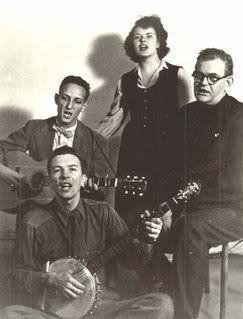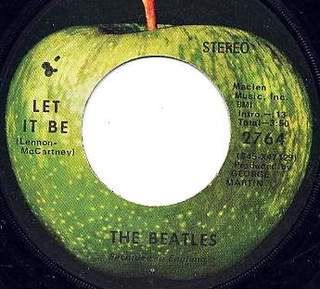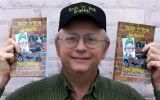
St. Thomas Church in Escanaba hosted popular guitar
Masses, beginning in the late 1960s.
By STEVE SEYMOUR
For a brief time beginning in the late 1960s, the guitar replaced the traditional organ at some church services, sparking a debate about religious music.
The guitar Mass was instituted in the Catholic Church to appeal to young people who were drawn to the six-string sounds popular in the rock 'n' roll music of the era.
Escanaba's St. Thomas the Apostle Church, 1820 9th Ave. N., hosted a weekly guitar Mass which packed the pews. Although my family belonged to St. Anne Church, I attended a number of guitar masses at St. Thomas at the time.
This was the era of the Vietnam War, civil rights movement, feminism and youth rebellion. The Church was trying to show its relevancy during a period when attendance at Sunday services was slipping.
Drawing people to St. Thomas was a talented trio of guitar players which included a nun from the Sisters of St. Dominic and two members of the local rock band Riot Squad. Sister Vincent Denise was joined by bassist Bob Anzalone and Jim Joque on rhythm guitar. Sister Denise, then a third grade teacher at St. Thomas School, played acoustic guitar as well as leading the congregation in singing.
The songs which helped fill St. Thomas to capacity every Sunday included folk songs everyone knows, such as "Kumbaya" and "If I Had a Hammer." Written by Pete Seeger and Lee Hays in 1958, the tune also known as "The Hammer Song" was first recorded by the Weavers. It didn't become a hit until the folk trio Peter, Paul and Mary enjoyed a Top Ten entry with their version in 1962.

The Weavers
"Kumbaya" was also recorded by the Weavers, but Tommy Leonetti had a minor hit with the song in early 1969, as "Kum Ba Yah." Released on the Decca label, the song featured orchestration by Bill Justis, otherwise famous for the instrumental "Raunchy."
I can still hear "Kumbaya," based on a slave song, ring in my ears. "Kumbaya, my Lord, Kumbaya, Oh Lord, Kumbaya." At the time, we thought the song addressed social justice, but the lyrics are often ridiculed today.
At some churches,"The Lord's Prayer" also became a production number with the congregation singing along to strumming guitars. You might remember that Sister Janet Meade turned the prayer into a hit song in 1974. She was known by many for her cathedral rock masses and weekly radio program.
Speaking of musical sisters, don't forget the Singing Nun (Sister Luc-Gabrielle) who took "Dominique" to Number One over the 1963 Christmas holiday period.
While Sister Denise spent her week teaching elementary school children, Anzalone and Joque attended Holy Name High School as members of the class of 1968. When Sister Denise was away during the summer, she was replaced by Escanaba High School student Kathy Kolich. Kolich, a member of the Escanaba High School Class of 1972, would also join the Riot Squad.
Anzalone and Joque plugged in their guitars and amplifiers with the happy approval of Father Arnold Thompson who saw attendance and enthusiasm grow at his northside church. "Local people, and those from surrounding communities, line the aisles to participate," an article in Gladstone's Delta Reporter weekly newspaper stated.
Despite the introduction of guitars, church was still quite formal. Sister Denise was attired in a white habit and Anzalone and Joque wore suits and ties. The trio played at 11:30 a. m. Sunday masses, but I remember some Sunday evening services, too.
Assistant Pastor Leno Zadra was also involved in managing the increased interest in his church. At the invitation of some of my fellow journalism students at Escanaba High School who lived in "north town,"
I joined the St. Thomas Youth Group, guided by Father Zadra.
The youth organization met Sundays in a small building located near the church at 1812 9th Ave. N., now home to the Knights of Columbus Council 640.
As a fund raiser for the group, we raffled off a Bridgestone Motor Bike, valued at $325. The machine was donated by Dave's Auto Body, authorized Bridgestone dealer for this area. Although I invested 25 cents in lucky ticket number 1001, I didn't win when the motor bike was given away on Sunday, June 1, 1969.
Motor bike giveaways notwithstanding, St. Thomas may have had a head start in attracting young people because it was Escanaba's youngest Catholic parish. In 1948, Bishop Thomas L. Noa approved a petition for a parish to serve the city's north side, since all three other Catholic Churches were located on the opposite side of town. The first services at the new St. Thomas were held later that year.
When St. Thomas Church had outstanding success with guitar Masses, other parishes joined the movement, including St. Anne's where my family attended church.
While guitar Masses were popular into the 1970s, they were also widely criticized. Some thought such Masses were inappropriate or even irreverent. Some traditionalists wanted to hear Gregorian chants or more widely accepted sacred music instead.
Music, apparently, is a long-running debate in the Catholic Church.
Prior to getting married, Sue and I decided we wanted some songs important to us in the ceremony at St. Anne's Church. We asked Father Darryl Pepin, a high school classmate of mine, for permission to use two songs recorded by the Beatles. "Let It Be," released in 1970, had lyrics about "Mother Mary." Although many people think that line addresses the Virgin Mary, Paul McCartney said it actually refers to his mother, Mary.
"In My Life," on the other hand, was about John Lennon's childhood and contained the lyrics: "Some (friends) are dead and some are living. In my life, I've loved them all."
The church would not approve "In My Life, but Brenda Biancosino Seymour was allowed to sing "Let It Be" to organ accompaniment during our Jan. 9, 1982 wedding.
Of course, I vividly remember the marriage ceremony, but I also fondly recall those guitar Masses from my high school days.


 I've enjoyed rock music and writing since I was a teenager in the 60s. I feel lucky to have been around when rock's greatest stars created their most enduring hits. At the same time I found I enjoyed writing, as well. I worked on my high school newspaper and magazine, was editor of several college publications and earned a bachelor's degree from Central Michigan University in 1973. I worked for the daily newspaper in my hometown after graduating, becoming managing editor after a few years. By the 1980s, I moved into public relations. In 1985, my wife Sue and I opened a retail music store, The Record Rack, which we still own. Rock 'n' roll has been integral to me and for the last 2O years I've been earning my living from it even though I don't have a musical bone in my body. In recent years, I've also I edited a small local magazine and launched a micro FM radio station. Now, I'm finally combining my love of writing and rock 'n' roll. I can't sing a note, but I know what I like. I'll tell you all about it when you read on. I hope you have as much enjoyment reading these installments as I've had writing them.
I've enjoyed rock music and writing since I was a teenager in the 60s. I feel lucky to have been around when rock's greatest stars created their most enduring hits. At the same time I found I enjoyed writing, as well. I worked on my high school newspaper and magazine, was editor of several college publications and earned a bachelor's degree from Central Michigan University in 1973. I worked for the daily newspaper in my hometown after graduating, becoming managing editor after a few years. By the 1980s, I moved into public relations. In 1985, my wife Sue and I opened a retail music store, The Record Rack, which we still own. Rock 'n' roll has been integral to me and for the last 2O years I've been earning my living from it even though I don't have a musical bone in my body. In recent years, I've also I edited a small local magazine and launched a micro FM radio station. Now, I'm finally combining my love of writing and rock 'n' roll. I can't sing a note, but I know what I like. I'll tell you all about it when you read on. I hope you have as much enjoyment reading these installments as I've had writing them.


No comments:
Post a Comment